Prof. Gianni Ciofani ‘If you are curious, the world will open up to you’
Waseda University prioritizes building international scientific networks
In today’s globalized world, international cooperation is becoming more and more important. Waseda University is at the forefront of scientific research, and prioritizes international cooperation and personal networks to advance crucial work in all fields of science and technology. We sat down with two prominent researchers at Waseda to hear about their work and the ways their cooperation over the years has yielded ground-breaking results in important fields.
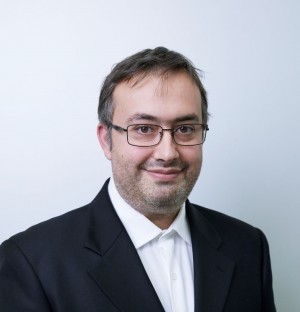
Prof. Gianni Ciofani is Senior Researcher at the Istituto Italiano di Tecnologia (Italian Institute of Technology, IIT). He is Principal Investigator of the Smart Bio-Interfaces Research Line and Coordinator of the Center for Materials Interfaces. He is prominent in the fields of smart nanomaterials for nanomedicine, bio/non-bio interactions, and biology in altered gravity conditions.
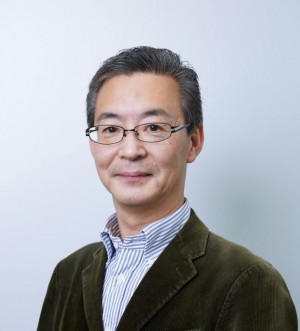
Prof. Shinji Takeoka is a Member of the Faculty of Science and Engineering, Waseda University. He is also the Director of the Waseda University Center for Advanced Biomedical Sciences, and the Tokyo Women’s Medical University-Waseda University Joint Institution for Advanced Biomedical Sciences (TWIns). His research interests include biomedical engineering, biomaterials, and molecular assembling science.
Thank you both for speaking with us today. First, Prof. Ciofani, could you tell us about your background and research interests?
My background is in biomedical engineering. I graduated from the Sant’Anna School for Advanced Studies in Pisa, Italy, and then got my PhD in innovative technologies in 2010. After that I focused my research on nanotechnology applied to biomedicine. In particular, I have always been interested in the physical properties of nanoparticles.
I am currently studying how nanoparticles react to external stimuli, for example nanoparticles that respond to magnetic fields or are sensitive to light and respond when illuminated with lasers. We exploit the responsiveness of these nanoparticles to perform actions inside the cells. With magnetic nanoparticles, for example, we perform hyperthermia — locally manipulate the temperature — in order to destroy cancer cells. We are also developing new cancer therapies using various nanoparticles, and for example we have succeeded in activating muscle cells to produce contractions.
I understand you are also a leader in space medicine.
That’s right. I have to say that the space research started as a bit of a lark during my master’s thesis project. A professor proposed that we apply for a small grant to perform experiments in weightless conditions aboard a special aircraft, a modified Airbus A300 that can perform parabolic flight. During the descent path of the trajectory, in free fall, we experience zero gravity. So we proposed some small experiments, very basic for my master’s study.
After that, I realized it would be exciting to perform more experiments in microgravity. Cells and organs experience something new because life evolved on earth at one G. So in zero G it is something drastically new for biology, and things change.
For example, astronauts coming back from the International Space Station are deeply affected. They can barely walk, they need rehabilitation, their immune system is compromised, as are their eyes. So we are investigating the effect of microgravity on cells and how our nanoparticles can somehow counteract the negative effects of microgravity.
So with the background in weightlessness studies, we applied for a grant to the Italian Space Agency, and were selected, and so we had the opportunity to perform experiments on board the ISS. We integrated our nanoparticles in a special bioreactor and delivered cells and experiments to the ISS, in 2017.
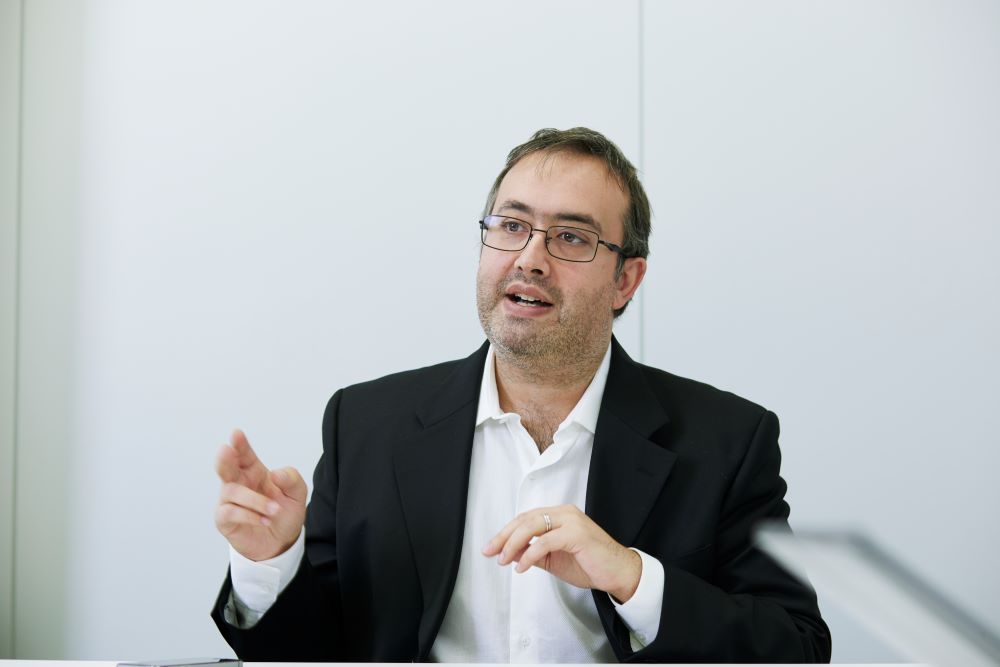
The goal of that experiment was to assess what happens to muscle cells during prolonged periods in microgravity. We performed transcriptomic analysis at the level of RNA, and at the same time, we also administered to the cells antioxidant nanoparticles. We verified that the nanoparticles are effective against the negative health effects of microgravity and cosmic radiation, which is a very important finding.
Then in 2019, we were again selected, and went back to Cape Canaveral to prepare another experiment.
The time of the astronauts is the main constraint, so the number of experiments that can be performed is relatively low. In 2019, we placed a small biological lab on board the ISS, a small incubator with 12 samples, and obtained a huge amount of data. We got another grant from the Italian Space Agency, so next year we will go back to the U.S. in August to prepare our experiments for the ISS.
We got results concerning differential gene expression in space, so we analyzed how the gene expression is altered in muscle cells in microgravity conditions, with and without the administration of the antioxidant nanoparticles. We realized that a lot of genes are upregulated or downregulated in space, and we were able to reduce these altered gene expressions by administering nanoparticles, to return to a situation that is more similar to that experienced here on Earth in one-G gravity conditions.
It was interesting because we didn’t focus just on a family of genes, but performed transcriptomics on all the genes of the cells, on all the RNA.
Tell us about your collaborative research here at Waseda.
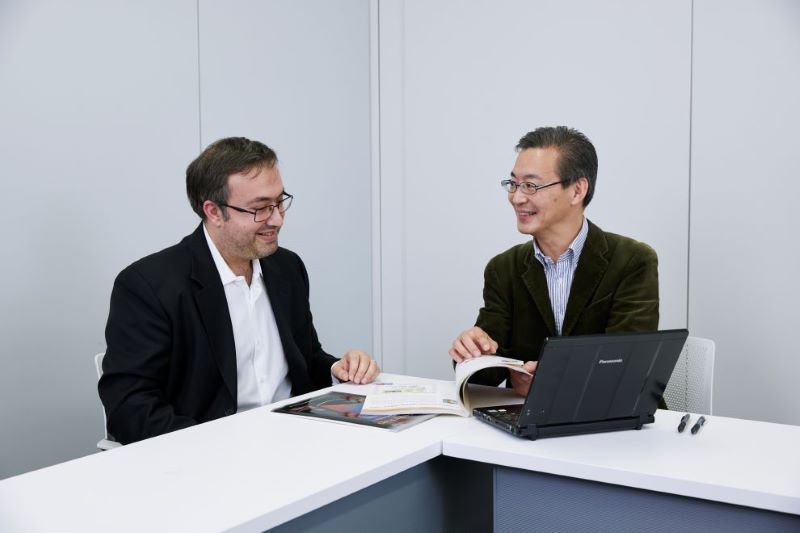
I came for the first time in 2007 to Dr. Takeoka’s lab when I was a PhD student and we performed three months of experiments. It was quite intensive, but we got a lot of data and we published many papers on those experiments. At that time, I was mainly working on carbon nanotubes because my PhD study focused on applications of carbon nanotubes in biomedicine. So we combined the liposomes technology that Dr. Takeoka was developing with my carbon nanotubes technology to make innovative coatings for biological applications.
As I said, my current research interest is focused on smart nanomaterials: some of our nanoparticles respond to light or are magnetic; some are piezoelectric, able to convert mechanical energy into electrical energy, for example, to activate neuronal cells. We are also working with the antioxidant nanoparticles that I mentioned for the space-related project. These are called nanozymes, because they behave like artificial nanotechnological enzymes, and they are catalytically active — very powerful scavengers of reactive oxygen species. They reduce the level of free radicals and control oxidative stress, which is related to many kinds of pathologies, from simple inflammation to cancer and neurodegenerative diseases. We are now exploring new possibilities for collaborative research on these topics.
You are also involved in educational activities. Could you tell us about them?
I guess I was a bit of a pioneer in our collaboration here, because after me lots of PhD students came from Sant’Anna to do research. And there is now a strong collaboration between Waseda University and IIT.
We are hoping that as soon as the pandemic conditions will allow a bit of exchange of students, because it would be valuable to send some students here. In the meantime, I give research guidance to the students.
Prof. Takeoka, could you tell us about your research, and the collaboration with Prof. Ciofani’s lab?
My background is in applied polymer chemistry, and currently we are developing liposomes, which can be used to create more sophisticated drug, gene or protein carriers.
We have developed novel nanocarriers bearing peptides, the related ligands of platelet constituents as platelet substitutes with high haemostatic ability.
I also study very thin films called nanosheets for application to medicine. This technology could potentially be very valuable, because the nanosheets are conformable to any surface physically, so we can apply this material for a lot of different biomedical applications, such as wound dressing materials.
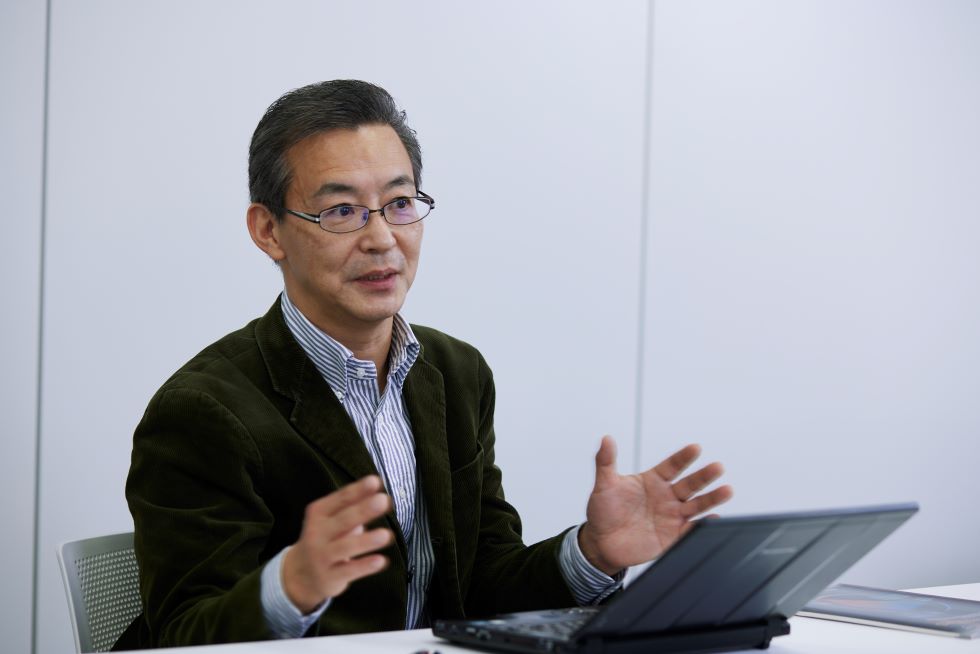
Molecular assembling and cooperative phenomena of biomolecules and biomacromolecules have implications to construct smart nanodevices, which also have multiple functions in biomedicine. By understanding the molecular assembling properties and how they interact with biomacromolecules such as bioactive compounds, genes and proteins, we can design nanocarriers for biomedical applications, such as precisely controlled drug delivery and release systems.
What kind of collaboration are you doing with Dr. Ciofani’s lab?
There are three types of research and education collaborations — information exchange, people exchange and lab exchange. The lab exchange has been established for many years, with collaboration between IIT and Waseda since 2007.
In the lab exchange between Dr. Ciofani’s and mine, people in one lab can use research facilities in the other directly or virtually, resulting in a sustainable relationship between the two labs even if the people keep changing. It’s a kind of “brain circulation.”
In this collaboration style, both Dr. Ciofani and I can nurture students who, when they later set up their own labs, will be able to have exchanges with Dr. Ciofani’s and my labs. Actually, some of my former students have already established their own labs and started lab exchanges with Dr. Ciofani’s lab. I am sure those activities will lead to a global network of researchers and will allow the students in those labs to envision their future as researchers.
Dr. Ciofani, what are your impressions of Waseda University?
Waseda is a wonderful place, a very international university, and very well connected all around the world. There is an international atmosphere, something that I really appreciate. I think it is important for students to have international connections, and Waseda places a lot of importance on exchange programs and global activities.
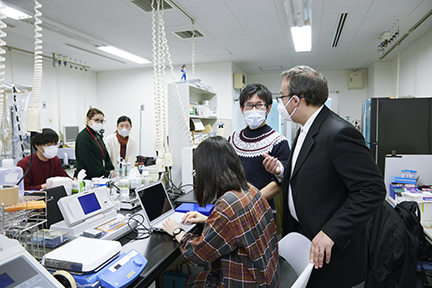
Unfortunately, the pandemic has hindered these activities. But I hope we can recover soon and get things back to normal so that the students can develop their networks of relationships, which are so crucial to their development.
What advice do you have for students who want to make a career in international research?
Well, first of all, spend time developing your network of personal relationships.
Then, I would say: always be curious. This is mandatory for a scientist, for those who want to advance in society. Don’t just close yourself off in your own topic and the details of your own small experiment — be curious about the world. Maintain a sense of wonder about what is happening around you.
If you are curious, the world will open up to you.
